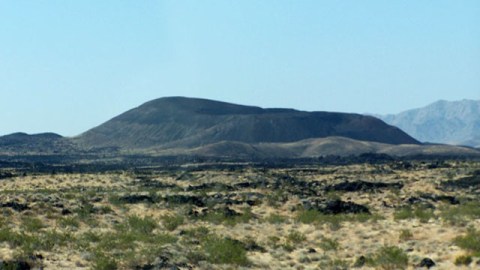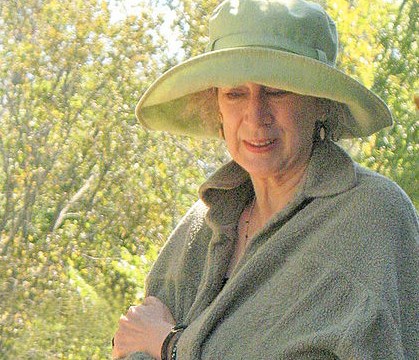The non-eruption at Pisgah Crater: The dangers of untrained interpretation of real-time data

By now, many of you have heard/read about the supposed eruption at Pisgah Crater in California. It was all over Youtube (you know, a great source for reliable scientific information) and various other conspiracy-related websites. However, the main problem with these stories is there was no eruption at Pisgah – no matter how badly many people wanted there to be. This non-eruption has even gotten the USGS to respond, having to officially say there was no eruption at Pisgah – and this is exactly what the USGS should be doing: correcting false information when it is presented as real.
Pisgah is part of the small Lavic Lake volcanic field in California, a collection of lava flows and scoria cones that is believed to have erupted in sometime during the Holocene (last ~10,000 years). As with many desert lava flows, it is hard to tell just how old they are because the lava is preserved so well in the desert environment, so even older lava flows can look like they erupted yesterday. However, the Lavic Lake volcanic field hasn’t shown any evidence of activity over the last 25 years – likely much, much longer as well.
So, why is everyone thinking there was any eruption. The claim is that a small plume was spotted on weather radar that seem to appear then disappear. This, to my knowledge, is the only evidence for the “6 plumes” from Pisgah. Plumes like this can come from many sources – thunderheads, dust plumes and smoke from fires and explosions for example – so a small plume that is ephemeral is by no means automatically volcanic. For something like an eruption in California, we need more evidence like actual video or sulfur dioxide data – none of which as materialized.
The real question I have for the eruption believers is this: Why would the USGS ever cover up an eruption like this? If Pisgah was erupting – or was even close to erupting – they would be sure to let everyone know because (a) preparations would need to be made for any people or facilties in the area and (b) it would be cool, scientifically! Pisgah is a remote, small volcano, so likely little harm would come to people or property, so to see an eruption like this would be an excellent opportunity to safely watch a scoria cone eruption. There is no reason to cover up an eruption like this, even if it were to keep people away.
If Pisgah was eruption, we would have much, much more evidence than a few radar loops and some “nearby earthquakes”. Remember, California is a very tectonically active area, especially in the Basin and Range region where Pisgah is located – so earthquakes are common. There is no evidence of any specific earthquake cluster under Pisgah – and the USGS has California monitored so well that even tiny M1 earthquakes are recorded. Pisgah might be remote, but it isn’t too remote for TV crews or scientists to get to Pisgah to see any plume – and no video evidence of plumes or ash have been found. So, we have an “eruption” have no one has seen live, leaves no evidence, and has no earthquakes associated with it. This, my friends, is no eruption.
I think what the Pisgah debacle has shown is how the steady stream of realtime data on the internet, however exciting, is still very dangerous. This, by no means, suggests I am for any control or limitation of such data – this development is clearly a positive for science. However, without proper training and vetting, we can all start spreading rumors and making claims that lack the support needed to make them legitimate. Care must be given before proclaiming an eruption is occurring when all you have is remote sensing data – do other factors corroborate the data – maybe sulfur dioxide or IR from satellites? Have locals seen any evidence of activity? Can a center of earthquake activity be found? Sure, it is exciting to “discover” an eruption, especially if it were happening in the United States, but spreading this information without knowing all the facts is something we all need to avoid.





